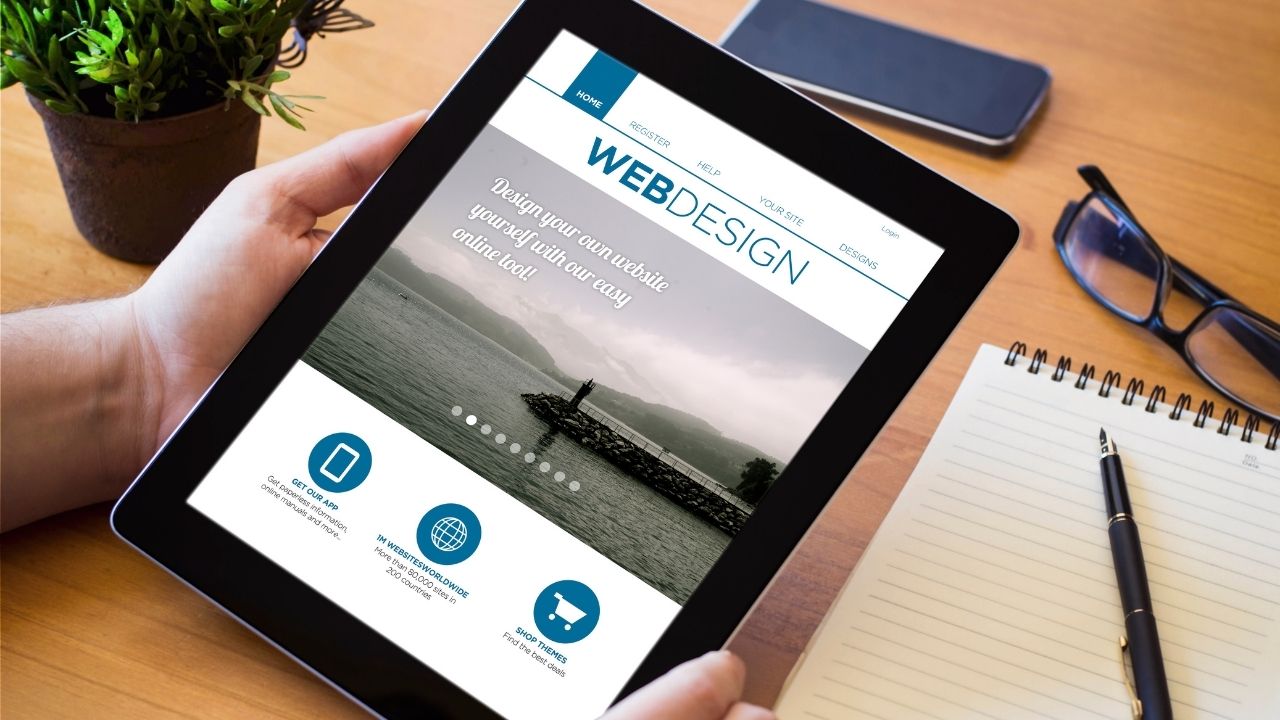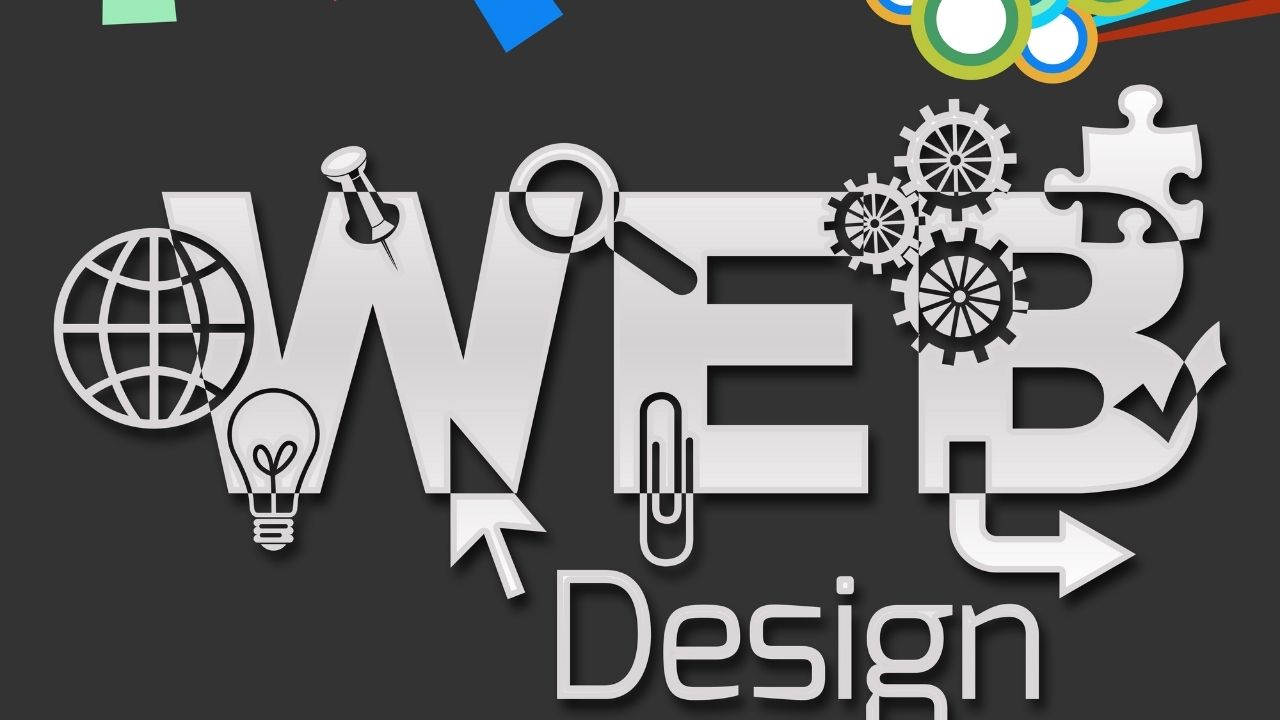Are you struggling to keep users engaged on your website? Discover the secrets to simplifying user interaction with our article on cognitive load and web design. Learn how reducing cognitive load can improve user experience, and explore strategies for streamlining navigation and information architecture.
With an emphasis on visual hierarchy and minimizing distractions, you'll discover the power of simplicity in enhancing user engagement. Design with user mental models in mind and optimize cognitive load for a seamless web experience.

 Remember to keep your design clean and clutter-free, as too much visual information can overwhelm users and increase cognitive load.
Remember to keep your design clean and clutter-free, as too much visual information can overwhelm users and increase cognitive load.
 When users visit a website, they need to be able to easily find what they are looking for. Clear navigation ensures that users can quickly and effortlessly move from one page to another.
By organizing content in a logical and hierarchical manner, users can easily understand the structure of the website and find the information they need. Additionally, an intuitive layout helps users navigate the website without feeling overwhelmed or confused.
When users visit a website, they need to be able to easily find what they are looking for. Clear navigation ensures that users can quickly and effortlessly move from one page to another.
By organizing content in a logical and hierarchical manner, users can easily understand the structure of the website and find the information they need. Additionally, an intuitive layout helps users navigate the website without feeling overwhelmed or confused.
 When it comes to web design, reducing complexity is key to ensuring a seamless user experience. By creating intuitive interfaces, you can help users make decisions more easily and efficiently.
Intuitive interfaces are designed to be easy to understand and navigate, minimizing cognitive load. By organizing information in a logical and user-friendly manner, you can guide users through the decision-making process effortlessly. Clear and concise labels, visual cues, and consistent design patterns all contribute to reducing complexity and making the interface more intuitive.
When it comes to web design, reducing complexity is key to ensuring a seamless user experience. By creating intuitive interfaces, you can help users make decisions more easily and efficiently.
Intuitive interfaces are designed to be easy to understand and navigate, minimizing cognitive load. By organizing information in a logical and user-friendly manner, you can guide users through the decision-making process effortlessly. Clear and concise labels, visual cues, and consistent design patterns all contribute to reducing complexity and making the interface more intuitive.

 When users are bombarded with too much information or complex design elements, it can overwhelm them and lead to cognitive overload. To prevent this, it is crucial to streamline your content and prioritize the most important information. This can be done through techniques such as using clear headings, concise paragraphs, and visual aids like images or infographics.
When users are bombarded with too much information or complex design elements, it can overwhelm them and lead to cognitive overload. To prevent this, it is crucial to streamline your content and prioritize the most important information. This can be done through techniques such as using clear headings, concise paragraphs, and visual aids like images or infographics.
 By designing with user mental models in mind and optimizing cognitive load, users are more likely to stay engaged and have a positive experience.
Remember, the power of simplicity in web design cannot be underestimated.
By designing with user mental models in mind and optimizing cognitive load, users are more likely to stay engaged and have a positive experience.
Remember, the power of simplicity in web design cannot be underestimated.
Key Takeaways
- Cognitive load management is crucial for effective user experience in web design.
- Strategies such as visual hierarchy, streamlined navigation, and clean design help reduce cognitive load.
- Clear hierarchy in user interaction simplifies decision-making and enhances user satisfaction.
- Guiding user attention through visual cues and strategic placement of key elements improves usability.
The Impact of Cognitive Load on User Experience
You'll notice a significant impact on your overall user experience when cognitive load becomes too high. Cognitive load management refers to the ability of a system or design to effectively manage the amount of mental effort required from users. When cognitive load exceeds the user's capacity, it leads to cognitive overload, which negatively affects their experience. The impact of cognitive overload can manifest in various ways. Users may struggle to understand complex instructions or navigate through cluttered interfaces. They may feel overwhelmed, frustrated, or even abandon the task altogether.
Strategies for Reducing Cognitive Load in Web Design
When it comes to designing a user-friendly website, you want to make sure that your users can easily navigate through your content without feeling overwhelmed. Two key techniques that can help you achieve this are visual hierarchy and streamlining navigation options. By using visual hierarchy, you can guide your users' attention to the most important elements on your page, making it easier for them to understand and interact with your content. Additionally, streamlining navigation options by reducing clutter and offering clear and intuitive menus can further enhance the user experience by simplifying the process of finding information or completing tasks.Visual Hierarchy Techniques
To improve the user experience on your website, prioritize visual hierarchy techniques. By applying visual hierarchy principles, you can guide users' attention to the most important elements on your page. Start by using size, color, and contrast to create a clear visual distinction between different elements. This will help users quickly identify what is most important and navigate through your website with ease. Additionally, make effective use of whitespace to create breathing room between different sections. Whitespace not only makes your content more readable, but it also helps users focus on the key information. Remember to keep your design clean and clutter-free, as too much visual information can overwhelm users and increase cognitive load.
Remember to keep your design clean and clutter-free, as too much visual information can overwhelm users and increase cognitive load.
Streamlining Navigation Options
Streamlining navigation options can greatly improve the user experience on your website. One way to achieve this is by streamlining search functionality. By optimizing the search bar and implementing filters or suggestions, users can quickly narrow down their search and find relevant content. Another important aspect is optimizing mobile navigation. With the increasing use of mobile devices, it is crucial to have a mobile-friendly navigation menu that is easy to access and use. This can include features such as collapsible menus, swipe gestures, or a sticky navigation bar.The Role of Visual Hierarchy in Simplifying User Interaction
In order to create a seamless user experience on your website, it's essential to understand the importance of clear hierarchy. By organizing your content in a hierarchical structure, you can guide the user's attention and make it easier for them to navigate and find what they're looking for. This not only simplifies the decision-making process for the user but also enhances their overall satisfaction with your website.Importance of Clear Hierarchy
You'll find that clear hierarchy is crucial when designing user-friendly websites. To create a seamless user experience, it's important to focus on clear navigation and an intuitive layout. When users visit a website, they need to be able to easily find what they are looking for. Clear navigation ensures that users can quickly and effortlessly move from one page to another.
By organizing content in a logical and hierarchical manner, users can easily understand the structure of the website and find the information they need. Additionally, an intuitive layout helps users navigate the website without feeling overwhelmed or confused.
When users visit a website, they need to be able to easily find what they are looking for. Clear navigation ensures that users can quickly and effortlessly move from one page to another.
By organizing content in a logical and hierarchical manner, users can easily understand the structure of the website and find the information they need. Additionally, an intuitive layout helps users navigate the website without feeling overwhelmed or confused.
Guiding User Attention
To effectively guide your attention on a website, it's important to use visual cues and strategically place key elements. Attention driven design and a user centric interface are essential in creating a seamless browsing experience. By using visual cues such as contrasting colors, bold fonts, and arrows, you can direct the user's attention to important information or calls to action. Placing key elements in strategic locations, such as the top of the page or in the center, can further guide the user's attention. Additionally, incorporating white space and minimizing clutter helps in creating a clean and focused design. Remember, the goal is to make it easy for users to find what they're looking for and take desired actions. With attention driven design and a user centric interface, you can ensure a positive user experience.Simplifying Decision-Making Process
Now that you know how to guide the user's attention, let's focus on simplifying the decision-making process. When it comes to web design, reducing complexity is key to ensuring a seamless user experience. By creating intuitive interfaces, you can help users make decisions more easily and efficiently.
Intuitive interfaces are designed to be easy to understand and navigate, minimizing cognitive load. By organizing information in a logical and user-friendly manner, you can guide users through the decision-making process effortlessly. Clear and concise labels, visual cues, and consistent design patterns all contribute to reducing complexity and making the interface more intuitive.
When it comes to web design, reducing complexity is key to ensuring a seamless user experience. By creating intuitive interfaces, you can help users make decisions more easily and efficiently.
Intuitive interfaces are designed to be easy to understand and navigate, minimizing cognitive load. By organizing information in a logical and user-friendly manner, you can guide users through the decision-making process effortlessly. Clear and concise labels, visual cues, and consistent design patterns all contribute to reducing complexity and making the interface more intuitive.
Simplifying Navigation and Information Architecture for Better User Experience
When navigating a website, it's important to simplify the information architecture for a better user experience. Streamlining content and creating a user-friendly navigation system are key to achieving this goal. By organizing your website's content in a logical and intuitive manner, you can help users find what they're looking for quickly and easily. This involves categorizing information into clear sections and providing clear labels and headings. Additionally, using visual cues, such as icons and color coding, can further enhance the user's ability to navigate your website. By simplifying the information architecture, you can reduce cognitive load for users, making it easier for them to understand and interact with your website.Minimizing Distractions on Web Pages to Improve Cognitive Load
Minimizing distractions on web pages helps improve the cognitive load you experience while navigating the site. By reducing cognitive overload and improving user focus, you can have a smoother and more enjoyable browsing experience. When there are too many distractions on a webpage, such as excessive ads, pop-ups, or irrelevant content, it becomes harder for you to focus on the main information or task at hand. This can lead to cognitive overload, where your brain becomes overwhelmed and finds it difficult to process the information effectively.
The Power of Simplicity: Streamlining User Interface Design
Streamlining the interface enhances your user experience by removing unnecessary elements and creating a more intuitive design. By prioritizing visual aesthetics and embracing user-centric design principles, websites and applications can effectively reduce cognitive load and improve usability. When the interface is cluttered with excessive features and complex navigation, it becomes overwhelming and confusing for users. However, by simplifying the design, you can focus on what truly matters, allowing for a more seamless interaction. A streamlined interface not only improves the overall user experience but also ensures that users can easily find and engage with the content they need. By eliminating unnecessary distractions and adopting a clean and minimalist approach, you can create a user interface that is both visually pleasing and easy to navigate.Designing With User Mental Models in Mind
Designing with user mental models in mind allows for a more intuitive and seamless experience. When you prioritize designing for accessibility, you ensure that your website or application can be easily used by people with disabilities. By incorporating user feedback, you gain valuable insights into how your users think, behave, and interact with your product. This allows you to align your design with their mental models, making it easier for them to navigate and understand. When users encounter a design that matches their mental models, they experience a sense of familiarity and comfort, reducing cognitive load and increasing engagement. By considering user mental models, you can create a user-centric design that caters to their needs, resulting in a more enjoyable and efficient user experience.Enhancing User Engagement Through Cognitive Load Optimization
To make your website or application more engaging, you can optimize how much information is presented at once, allowing users to focus on what matters most to them. By optimizing content and reducing cognitive load, you can create a more seamless and enjoyable user experience. When users are bombarded with too much information or complex design elements, it can overwhelm them and lead to cognitive overload. To prevent this, it is crucial to streamline your content and prioritize the most important information. This can be done through techniques such as using clear headings, concise paragraphs, and visual aids like images or infographics.
When users are bombarded with too much information or complex design elements, it can overwhelm them and lead to cognitive overload. To prevent this, it is crucial to streamline your content and prioritize the most important information. This can be done through techniques such as using clear headings, concise paragraphs, and visual aids like images or infographics.
Frequently Asked Questions
How Does Cognitive Load Affect User Satisfaction and Overall Experience on a Website?
Cognitive load directly affects your satisfaction and overall experience on a website. The impact of cognitive load on your website experience can make it more difficult to navigate and process information, leading to frustration and dissatisfaction.What Are Some Effective Techniques for Reducing Cognitive Load in Web Design?
To reduce cognitive load in web design, use effective techniques like simplifying navigation, minimizing distractions, and providing clear instructions. These strategies help users focus on the task at hand and enhance their overall experience.How Does Visual Hierarchy Contribute to Simplifying User Interaction on a Website?
Visual hierarchy is crucial in simplifying user interaction on a website. By organizing content with clear visual cues, users can easily navigate and understand the information, enhancing their overall web experience.What Are Some Best Practices for Simplifying Navigation and Information Architecture to Enhance User Experience?
To enhance your user experience, simplify navigation by organizing content effectively. This helps users easily find what they're looking for and reduces cognitive load. Focus on clear labeling, intuitive menus, and logical information architecture.How Can Minimizing Distractions on Web Pages Improve Cognitive Load and User Engagement?
Reducing distractions on web pages enhances user focus and engagement. By minimizing unnecessary elements, you can create a clean and streamlined design that allows users to easily process information and navigate your site.Conclusion
In conclusion, simplifying user interaction is crucial for improving the overall user experience on websites. By reducing cognitive load through strategies such as visual hierarchy, simplified navigation, and minimizing distractions, web designers can create interfaces that are more intuitive and engaging. By designing with user mental models in mind and optimizing cognitive load, users are more likely to stay engaged and have a positive experience.
Remember, the power of simplicity in web design cannot be underestimated.
By designing with user mental models in mind and optimizing cognitive load, users are more likely to stay engaged and have a positive experience.
Remember, the power of simplicity in web design cannot be underestimated.
